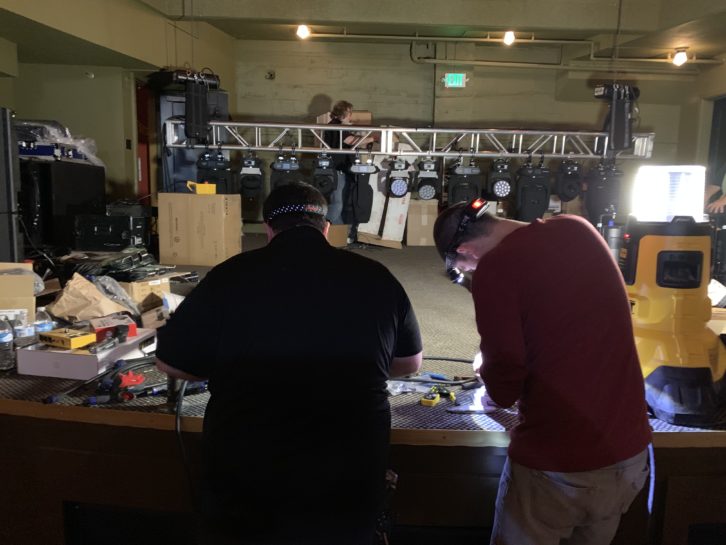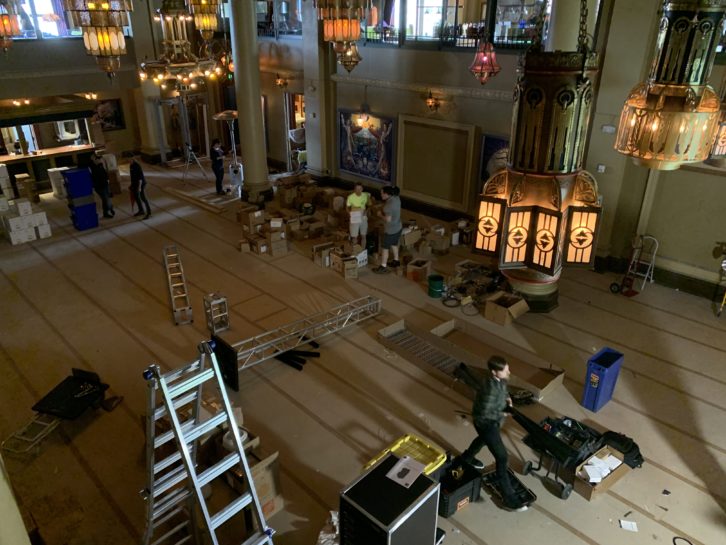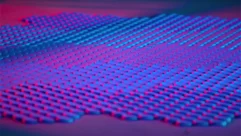 On this edition of the SVC Podcast, Contributing Editor Bennett Liles talks with Nick Moon, owner of Tone Proper AV in Portland. Oregon about their installation of an all new sound system for McMenamin’s Elks Temple Spanish Ballroom in Tacoma, Washington. Nick discusses the system design, operation and he details the stage monitoring setup. Patterned after the previous installation at McMenamin’s Crystal Ballroom in Portland, the Tacoma venue allows touring acts to save their setups for instant recall in either of the two.
On this edition of the SVC Podcast, Contributing Editor Bennett Liles talks with Nick Moon, owner of Tone Proper AV in Portland. Oregon about their installation of an all new sound system for McMenamin’s Elks Temple Spanish Ballroom in Tacoma, Washington. Nick discusses the system design, operation and he details the stage monitoring setup. Patterned after the previous installation at McMenamin’s Crystal Ballroom in Portland, the Tacoma venue allows touring acts to save their setups for instant recall in either of the two.
FOR MORE: GO TO PART 2
Links:
- Tone Proper AV
- McMenamin’s Elks Temple Spanish Ballroom
- Powersoft
- You Tube video: The Transformation of McMenamin’s Elks Temple
Transcript-
Mixing a beautifully renovated classical building with a modern sound system isn’t as easy as it may sound. Tone Proper AV in Portland, Oregon got the job to do just that in McMenamin’s Elks Temple Spanish Ballroom in Tacoma. Tone Proper owner Nick Moon is here to take us along for the ride right now on the SVC Podcast.
Nick, very glad to have you joining us on the SVC Podcast from Tone Proper Audio and Video in Portland, Oregon. Thanks for getting with us.
Thanks a lot. I appreciate you guys reaching out, so happy to be here.
We’ve got a new sound installation at the McMenamin’s Elks Temple Spanish Ballroom but first tell us about the company that made the sound system happen, Tone Proper AV. How long has it been around and what projects do you like to take on?
Sure. Well, Tone Proper AV started when I got off of the road. I was tour manager and monitor engineer for Gino Vannelli. I did all of his studio albums – the last four studio albums for him – and then he asked me to go on the road. I did a lot of that stuff. We did several world tours and, of course, we single and had no kids. And then when I got married and had kids the road life ended and then I basically tried to figure out how do I use my connections in the industry? I enjoyed a lot of the design work and all that stuff and that’s how Tone Proper AV basically formed was that I was a dad and just grew the business from there. Started off with basically Harman, so JBL products, and now we have – I don’t know how many lines we have now but a lot. Everything from Fulcrum and obviously Powersoft and Bose and tons of video wall stuff. And lighting – Chauvet, Elation and all that stuff. So over the last about six years or so it’s definitely grown. [Timestamp: 2:03]
And into system design and installation now.
Yep. So we do a lot of ease modeling. We’re certified providers. We were with L-Acoustics for a while and so we do a lot of design work for companies like FBT with Bose and other companies as well and Fulcrum. So I really enjoy doing modeling and designing and floor plans and all the kind of stuff with churches and clubs and doing all the wiring and schematics, and just generally designing a system. I really enjoy just putting the right thing in the right room. [Timestamp: 2:32]

Yes, it’s probably the most creative part of what is otherwise a very technical and numbers-oriented profession.
It is. A lot of people just kind of copy and paste. I see that a lot in the industry where, “Oh, well that worked for that church,” or whatever and so let’s just do the same thing again. Well, we live in a pretty amazing time. There’s a lot of choices and there’s a lot of subtle differences between different speakers, different manufacturers, different everything. So yes, it’s more work but in the end this is an investment that some of these places are going to have for 10, 20 years. So it’s important to get it right and put in the due diligence of doing a good job. [Timestamp: 3:13]

And so you were called in for a pretty involved installation project here at McMenamin’s Elks Temple Spanish Ballroom in Tacoma, Washington.
That’s correct. That building when we first did the walkthrough with hardhats, I mean it was totally condemned. I mean there was holes in the floor going down like two stories. Plaster was falling down off of the walls. I mean graffiti everywhere inside and it was pretty bad to say the least. [Timestamp: 3:39]
Yeah so you knew you had a lot of work to do but you’re really starting over with this complete restoration and not having to retrofit anything or put a system into a new facility that might have some limitations built in.
Yeah. We had a lot of time to do really accurate models so I get to go in there with a laser, draw the whole room in Modeler, which is the Bose modeling software. So we really play around with lots of configurations for show match and figure out where things are going to go. Cable runs, because they have two big venues like this – the other one is the Crystal Ballroom which we did about a year-and-a-half ago, two years ago – they wanted it to be very similar as far as front-of-house monitor, PA, so an artist could just walk in somewhere and play the Crystal Ballroom and play that one the next night. And also just for reliability and crosspollination of equipment in all that. Both of those venues are very similar as far as layout. [Timestamp: 4:37]

And I guess the acoustics in these two venues are similar as well.
Well, they’re both challenging. I mean the look of the spaces, there’s really a lot going on in there so that kind of adds a level of diffusion but there’s really no acoustical absorption in either space. But all of the interesting pillars and chandeliers and all the other stuff kind of adds a level of diffusion, but there is no absorption. Yeah, so it’s an acoustically challenging space but with proper implementation we can keep the sound where we want it so that’s good. [Timestamp: 5:07]
And these appear to be fairly popular places to perform for touring acts in the Oregon and Washington area.
Yeah. The Crystal Ballroom is really well-established so everybody plays there. I think it’s going to probably take a little bit of time for the Tacoma one to get on the map, but I feel like that won’t take too long because McMenamin’s is a really great company and lots of people want to play there. It’s a really beautiful space so I think they’ll attract a lot of people. And it’s a nice size, too. I think it’s about a 500 or so, 600. But anyway, it’s a nice intimate venue for sure. [Timestamp: 5:40]
When you walked through the Spanish Ballroom and it was pretty much in shambles, how extensive was the renovation? That went all the way down to the basic electrical system?
Everything, I mean down to the studs completely. I mean it was a complete gut and a complete redo. But McMenamin’s is really known for taking this old buildings and refurbishing them so there was a space in there where they took down all the molding and somebody was cleaning it with a toothbrush and then repainting them and then putting them all back. So it looks like it did probably 100 year ago but better, so they do a good job of doing that. But yeah, all the electrical, we have a full 100-amp, three phase company switch just for audio and one for lighting and guest stuff. So all the power is done correctly and everything is what you would expect in any kind of good venue that you would walk into. [Timestamp: 6:29]
Always good to be able to keep the audio power separate from lighting and any other equipment and avoid a variety of weird things that have happened with lighting and sound fighting each other.
Exactly.

What type of amplifiers did you use on the project? They had to be multi-channel.
Yeah. So on the monitor system on the monitor side we have 12 independent mixes with the Fulcrum FW-15’s. And so we have 12 amp channels so we’re using three of the Powersoft Quattrocanali 4804’s which are really a pretty amazing piece of equipment. It’s a single rack space four channel with DSP. It’s got Dante and everything else in it as well. So yeah, three rack spaces with 12 amp channels and 1250 watts, I think, per channel. So it’s a pretty potent small package for sure. [Timestamp: 7:17]
Since the electrical system was a complete re-do you had pretty much a clean slate to start with and with these Powersoft amps one of the things that you hear quite a bit is that they’re very stingy on power use.
Yeah. They’re super-efficient so they’re only really drawing what they need at any one time. They even have sleep modes on them where somebody leaves them on they can go to sleep and all that. But because we had plenty of electrical available I’m also a Motion Labs guy so I put Motion Labs distros in pretty much every job I can just because it’s nice to know that you have the right power where you need it. So yeah, we have a 100-amp Motion Labs distro so every amplifier in the entire install had its own dedicated service. So everything has as much power as it needs to do what it needs to do. [Timestamp: 8:04]
With the Fulcrum Acoustic FW-15’s and the stage monitoring, how is that controlled by the operators as well as distributed to the monitor speakers?
Well, there’s basically two steps. Inside the amplifier we have the tuning file, which is provided by Fulcrum Acoustic which has all of the locked files settings for the speaker. So you’ve got an EQ and limit and all kinds of other voicing that’s needed so that the speaker sounds like Fulcrum wants it to sound. And also for the protection of the speaker you basically have to work pretty hard to ruin that speaker with that file in there if at all possible. And then as far as feeding it we have a Midas PRO2C, which is my favorite monitor board, feeding all of that. So in that situation in actually both venues we have a 58-channel transformer isolated analog split so when you’re plugging in all our instruments on the stage the main goes to the front of house and the split goes to the monitor world. They have complete different signals from the same source so the monitor engineer can do whatever he needs to do and the front-of-house engineer can do whatever he needs to do, or she needs to do, and that’s really the way to do it because having do to monitors from front-of-house is a real pain. Having everything separated like that is a really good way to do it and that’s what people expect, honestly, in these kind of venues anyway. [Timestamp: 9:26]
You don’t even have to worry about any effect from the input pads on the other mixer.
Absolutely nothing. Gain structure, everything is completely separated so everybody can have what they want. And the only thing that’s phantom power is controlled by the main and the transformer-isolated one is separate. So that’s the only difference. [Timestamp: 9:43]
Alright well in part two we’re going to get into what you did when you got in there. I know this was a very physically challenging setup with not a lot of easy ways to get the gear into the place. We’re really going to want to hear about that. Our guest today is Nick Moon, owner of Tone Proper Audio and Video in Portland. Thanks for getting with us.
Thank you very much.
So now there’s a careful balance of old world acoustics and new audio technology at McMenamin’s Elks Temple Spanish Ballroom. Nick will be back with us next week with the story on how it went when the gear met the house with stairs but no loading dock. Get with us for that on the next SVC Podcast.










